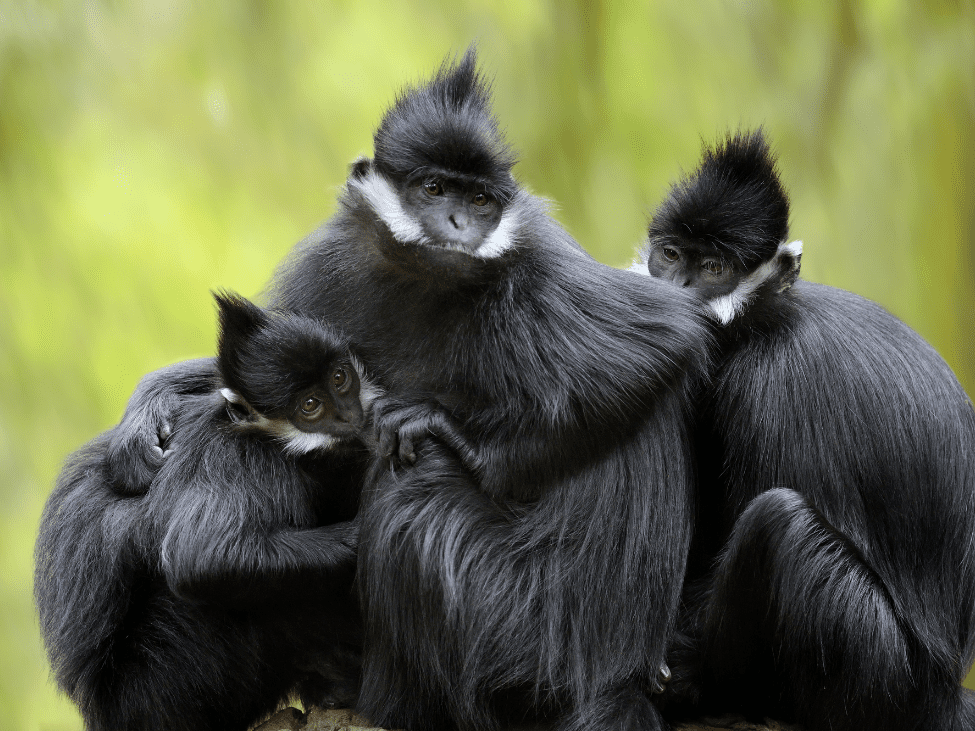Phong Nha-Ke Bang National Park: A Wildlife Lover's Paradise
- Vespa Adventures

- Aug 6, 2024
- 3 min read
If you’re a nature enthusiast, Phong Nha-Ke Bang National Park is a destination you absolutely cannot miss. As a UNESCO World Heritage Site, this park is one of Vietnam’s most spectacular natural treasures. Known for its stunning karst landscapes, extensive cave systems, and diverse wildlife, Phong Nha-Ke Bang offers an adventure that will thrill and amaze you. Join us as we delve into the unique wildlife of Phong Nha-Ke Bang, the best ways to explore the park, and the must-see attractions that make this place a wildlife lover’s paradise.

The Rich Biodiversity of Phong Nha-Ke Bang
Phong Nha-Ke Bang is home to an incredible array of flora and fauna. The park’s diverse habitats support numerous species, some of which are endemic to the region. Here are a few highlights you should keep an eye out for:
Ha Tinh Langur (Trachypithecus hatinhensis): This critically endangered primate is native to the limestone forests of Phong Nha-Ke Bang. Spotting these elusive langurs in their natural habitat is a highlight for any wildlife enthusiast.

Annamite Striped Rabbit (Nesolagus timminsi): A rare and fascinating species, the Annamite striped rabbit is unique to the Annamite Mountains. Its striking striped fur makes it a captivating sight.

Asian Black Bear (Ursus thibetanus): Also known as the moon bear, this species is occasionally spotted in the park. Conservation efforts are ongoing to protect these magnificent animals.

Birdlife: The park is a haven for birdwatchers, with species like the Sooty Babbler, Red-collared Woodpecker, and the Chestnut-necklaced Partridge adding to the avian diversity.

Exploring the Caves: Nature’s Marvels
Phong Nha-Ke Bang is renowned for its extensive cave systems, many of which are among the largest and most spectacular in the world. Here are a few caves you absolutely must explore:
Phong Nha Cave: Accessible by boat, this cave is famous for its impressive stalactites and stalagmites. The underground river and intricate formations are simply mesmerizing.
Paradise Cave (Thien Duong Cave): Discovered in 2005, Paradise Cave stretches for 31 kilometers. Its immense size and stunning limestone formations will leave you in awe.
Son Doong Cave: Known as the largest cave in the world, Son Doong Cave is an adventurer’s dream. Due to its size and complexity, tours are limited and require advance booking, but it’s absolutely worth the effort.
Where to Go:
Phong Nha Cave
Paradise Cave
Son Doong Cave
Tour Operators: Oxalis Adventure, Jungle Boss

Trekking and Wildlife Spotting
For those who love trekking, Phong Nha-Ke Bang offers numerous routes that take you through dense jungles, limestone mountains, and along pristine rivers. Here’s what you can look forward to:
Trekking Routes: Popular routes include the Nuoc Mooc Eco Trail and the trek to Hang En Cave, one of the largest caves in the world.
Wildlife Spotting: Early morning and late afternoon are the best times to observe wildlife. Keep an eye out for langurs, macaques, and various bird species.
There’s something truly special about walking through these ancient forests, listening to the sounds of nature, and catching glimpses of the incredible wildlife that calls this park home.

Sustainable Tourism and Conservation
One of the best things about Phong Nha-Ke Bang is its commitment to sustainable tourism and conservation. Visitors are encouraged to respect the natural environment, follow designated trails, and support local conservation initiatives. By choosing eco-friendly tours and accommodations, you can help preserve this unique ecosystem.
Eco-friendly Accommodations: Consider staying at eco-lodges or homestays that prioritize sustainability and support local communities.
Conservation Projects: Participate in or donate to projects aimed at protecting endangered species and preserving the park’s biodiversity.
It’s important for us to travel responsibly and leave these beautiful places just as we found them, if not better.

Best Time to Visit Phong Nha-Ke Bang National Park
The best time to visit Phong Nha-Ke Bang National Park is from February to August when the weather is dry and temperatures are comfortable. The park is less accessible during the rainy season (September to January) due to potential flooding, so plan accordingly.

Embrace the Wilderness of Phong Nha-Ke Bang
Phong Nha-Ke Bang National Park offers a unique blend of adventure, natural beauty, and wildlife encounters. Whether you’re exploring its magnificent caves, trekking through lush forests, or spotting rare animals, this park promises an unforgettable experience for any wildlife lover.
As you plan your visit, consider exploring other exciting destinations in Vietnam with Vespa Adventures. Our tours provide unique insights into the country’s rich culture and diverse landscapes, ensuring a memorable and enriching experience. Check out our Vietnam Tours and start planning your next adventure today!



Comments